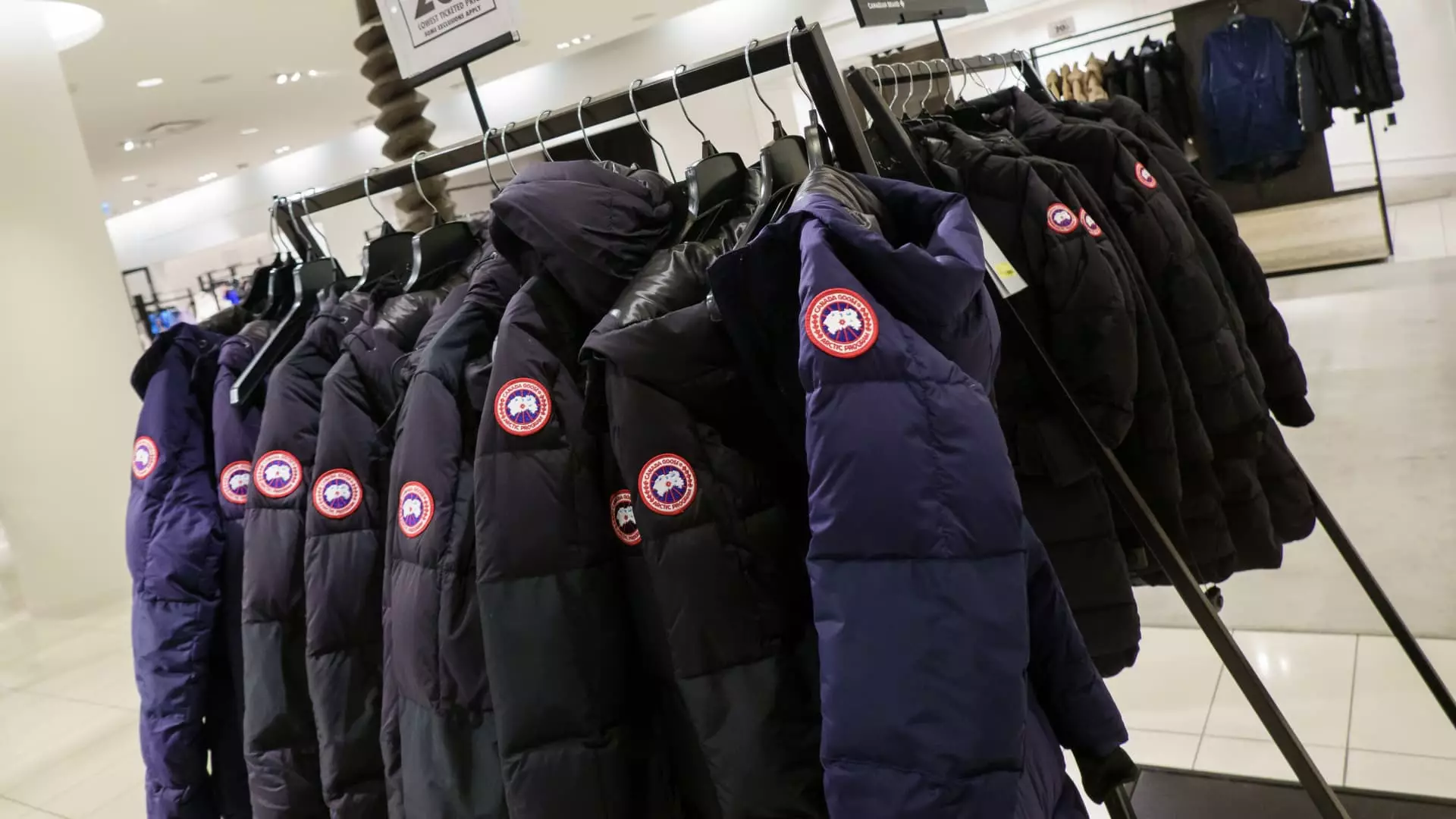Canada Goose, the iconic Canadian luxury brand synonymous with high-end winter wear, recently experienced an unexpected surge in its stock price, climbing over 20% in a single day. This impressive jump followed the announcement of fiscal fourth-quarter earnings that exceeded analysts’ projections. However, beneath the surface of this seemingly positive news lies a narrative woven with perilous threads of uncertainty. The company’s decision to pull its fiscal 2026 outlook should raise eyebrows and prompt a critical examination of its resilience in an increasingly volatile market.
Concealed Concerns in the Financial Figures
On the one hand, the reported earnings per share of 33 Canadian cents, against the anticipated 23 cents, appears to be a remarkable achievement. Moreover, the revenue of CA$384.6 million, considerably higher than the expected CA$356.4 million, paints a rosy picture for investors yearning for positive signals. But amidst these numbers lurks an unsettling reality. The avoidance of a financial forecast for the upcoming fiscal year signals a deep-seated fear of the unpredictable economic landscape. Identifying such gaps is vital; after all, numbers can be misleading when they’re not contextualized within broader economic challenges.
Canada Goose’s acknowledgment of “dynamic consumer spending patterns” points to an unsettling trend—a shift in consumer confidence driven by global trade uncertainties. Rather than viewing this stock spike as a reason for celebration, it may be wiser to scrutinize the circumstances that led to this moment. The luxury sector is seeing cracks; giants like LVMH and Burberry have also reported a slowdown in sales, suggesting that Canada’s high-end outerwear brand may be sailing in turbulent waters alongside its competitors.
Production and Tariff Turmoil
A noteworthy aspect of the earnings call was the insights from Chief Operating Officer Beth Clymer, particularly regarding manufacturing practices. With 75% of Canada Goose’s units produced in Canada and compliance with the US-Mexico-Canada Agreement, questions about vulnerability to tariffs seem to surface, albeit the management claims the financial impact of external tariffs will be minimal. This bravado raises a caution flag: relying on the unpredictable nature of trade agreements could lead to complacency.
CEO Dani Reiss’s sentiment that Canada Goose has historically weathered storms—from the 2008 financial crisis to the onset of COVID-19—smacks of overconfidence. While their resilience is commendable, there’s a risk in romanticizing past successes. Competitive market landscapes and shifting consumer behavior are not static; one’s ability to adapt must evolve concurrently. Declining global conditions could pose threats that echo louder than past experiences, signaling the need for a dynamic strategy rather than an unwavering belief in brand strength.
Ambition Meets the Reality of Consumer Preferences
As Canada Goose aims to broaden its product offerings beyond winter gear—launching rain jackets and warm-weather clothing—the brand must tread carefully. The introduction of an AI-powered eyewear collection signifies innovation, but one must ask: will the market embrace this pivot? While diversifying offerings to maintain year-round relevancy is undoubtedly a pilgrimage many brands undertake, the luxury consumer’s preference for exclusivity and authenticity must never be overlooked.
In a world dominated by fast fashion, Canada Goose risks becoming just another brand lost amid the noise if it fails to nurture its core identity while adapting to new trends. The current enthusiasm over fourth-quarter performance should not overshadow the requirement for strategic foresight that respects both heritage and contemporary market aspirations.
Investor Sentiments and Market Dynamics
Despite the euphoric stock increase, it’s important for investors to ground themselves in the reality that Canada Goose’s shares had plunged nearly 14% year-to-date prior to this earnings report, hitting an all-time low last month after a disastrous downgrade by Barclays. The market’s oscillation suggests that investors remain apprehensive despite the momentary uptick in stock price. The fluctuating nature of luxury retail, compounded by potential external economic shocks, serves as a reminder that confidence can be a double-edged sword.
While Canada Goose’s recent earnings report offers a glimmer of hope, it envelops a wealth of concern that extends beyond immediate financial triumphs. Balancing optimism with realism is paramount in the current economic climate. This prosperous moment might well be a fleeting high on the roller coaster of luxury retail—one that requires vigilance and a robust strategy to navigate the inevitable twists and turns ahead.

